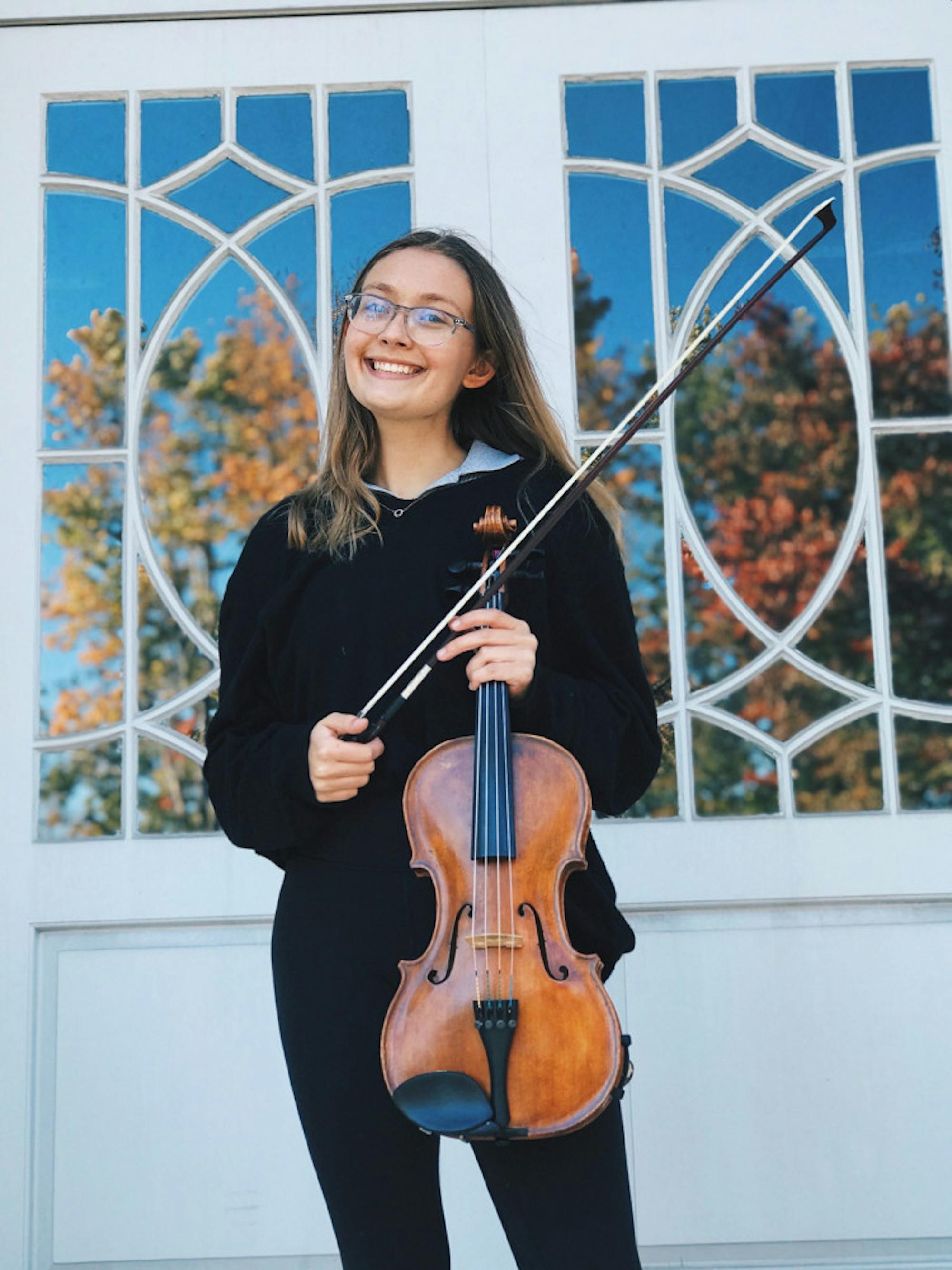Editor’s note: The Daily’s editorial department acknowledges that this article is premised on a conflict of interest. This article is a special feature for Commencement 2022 that does not represent the Daily’s standard journalistic practices.
A former executive arts editor and former editor in chief of the Daily, senior Megan Szostak, sat down with Maeve Hagerty, the current executive arts editor, in a Zoom interview on April 15 to reflect on her experiences at the Daily and with arts on campus. A sociology major, double minoring in music and Medieval studies, Szostak’s presence at the Daily has been characterized by her mentorship, journalistic integrity and an empathetic leadership style that has been responsible, at least for this author, for creating a welcoming community within the Daily and the arts section specifically.
Szostak first started in the Daily as a Features columnist during the spring of her freshman year, writing about classical music history in her column, “Lisztomania.”
She explained that her ascension to the position of executive arts editor was thanks to her growing passion for writing about the arts, which was ultimately what inspired her to join the section and apply to become the executive arts editor at the end of her sophomore year.
For Szostak, being an Arts writer was so special because “you’re not getting assigned stories that you might not be passionate about. Every story that’s pitched is pitched by somebody who’s so passionate about what they’re about to write about.”
Further, as the executive arts editor, she felt that one of her favorite elements of the role was “reading the writing that is just filled with voice and filled with passion.”
However, her experience as executive arts editor was tainted by the COVID-19 pandemic and its effect on the arts at Tufts, as well as arts on a larger scale. Szostak described some of the challenges of being the executive arts editor during fall 2020, the first full semester at Tufts during the COVID-19 pandemic.
“One of the biggest losses to the pandemic was the loss of live arts events,” Szostak said. “There weren’t exhibitions that were in person. There weren’t theater productions. There weren’t concerts.”
Further, Szostak noted how difficult it was, as an executive editor, to get her section excited about attending virtual arts events, as opposed to traditional live events.
Szostak and the rest of her class are the last graduating class at Tufts to have gotten a full year of campus life pre-pandemic. However, when asked if she noticed any changes to the arts scene at Tufts now that the COVID-19 restrictions are being relaxed, Szostak noted that the arts did not seem any less vibrant.
“I think that there certainly were losses,” Szostak admitted. “Students weren’t allowed to sing or play winds and brass [instruments] for a period of time due to restrictions. And that was a great loss for the talent of all those students, all those musicians, but also for the community that wasn’t able to hear a choir concert or wasn’t able to hear a wind ensemble concert.”
Further, Szostak commented on the ingenuity required of many groups on campus in keeping the arts alive.
“Different student groups were very creative in ways they were able to continue producing art and continue spreading music, spreading theater, spreading visual art through different media than how they were spreading it pre-pandemic,” Szostak said.
Szostak pondered the unique position of her senior class, commenting on how, because they had lived through a year and a half of normalcy at Tufts, her grade felt the burden of the pandemic’s changes at Tufts very deeply.
“But that just means we’re feeling the resurrection of the arts that much more, because we felt the loss,” Szostak explained. “We knew what it was like, we knew what we were missing. So now, every time we hear someone singing, we realize how much we missed it and how much it means to be able to hear it again.”
As she subsequently spoke of her role as editor in chief with true humility, Szostak revealed another piece of what has made her such an impactful figure within the Daily: the people she worked alongside with.
“I think what’s the most important thing is surrounding yourself with people who you know will support you and who you can offer support to as they perform their jobs,” she said. “Without them, I think the successes that I had wouldn’t have been as great as they were.”
Szostak turned back to her love for classical music, the driving force behind her beginning to write for the Daily, and her motivation for joining the Tufts Symphony Orchestra as a violist.
She reflected on the content of her freshman year Lisztomania column.
“I wish I had dug a little deeper to find composers who didn’t fit the mold of what a classical musician or a classical composer looked like … throughout so much of history,” Szostak said.
When speaking of the legacy that she will leave behind, she felt particularly proud of her role as vice president of TSO, and how she and the rest of the executive board worked to “increase representation in the music that we perform, in the music that our ensemble chooses to include in our concerts, which I think was a really wonderful thing.”
Szostak spoke with strength when discussing the changes that took place in TSO, making it clear how important to her it had been to witness TSO’s focus on representation and inclusion within the arts.
“Seeing how the orchestra changed alongside this national, international, movement to increase representation within the arts and within what art is shared, whose voices are heard, whose music is heard, I think that was a really special thing to be a part of,” Szostak said.
Szostak spoke about starting her new life after commencement.
“I’m feeling so ready for the next chapter,” Szostak admitted. “But also, it’s hard to leave a community that has been supporting you and that you’ve supported back for four years. … I think that those are sentiments that are shared by a lot of graduating seniors.”
Watching seniors like Szostak, who have made such an incredible mark on Tufts and the students here, graduate and move on is certainly a bittersweet moment. The contributions and legacy of Szostak and the rest of her senior class have been essential to Tufts’ return to normalcy, and they will certainly continue to influence Tufts arts and culture for years to come.
Szostak closed the interview by stating that “there’s been a lot of loss in the arts and in their practice and performance on campus, just due to COVID. There’s been a lot of other loss, immeasurable loss, due to COVID.”
But to her, these losses were not what defined her class or her time at Tufts; rather, Szostak emphasized the growth that resulted from such loss.
“We’ve learned ways of being creative,” she said. “We’ve learned ways of incorporating new voices into the repertoire, and I think that that’s been just such an important thing that might not have happened otherwise.”






